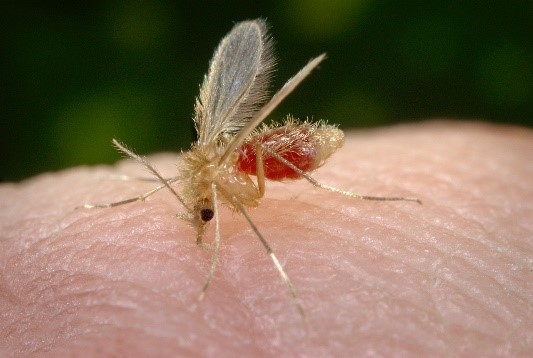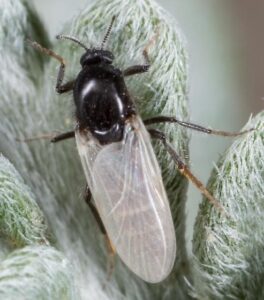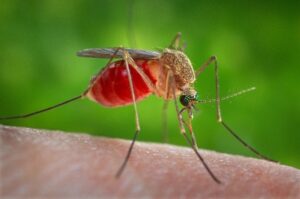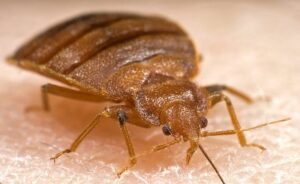Sand Fly, No-See-Ums, or Black Gnat:
General Description
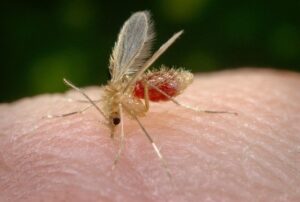 |
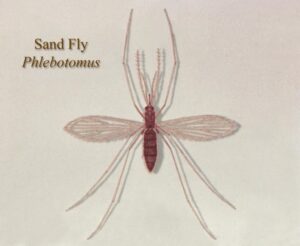 |
- Sand flies follow the Psychodidae family, and they are small flies that do not exceed 5 mm in length. This family includes several hundred species.
- The adult is 2-3 mm long and dull in color.
- The wings have a special shape and have nine or more long veins.
- The body is covered with thick hair, and that is why it is sometimes called moth flies.
- The proboscis is short, mutated for piercing and sucking in females, and it is sucking only in males.
- The chest is convex, the legs are long, and the wings have pointed tips covered with hair, and they rise upward at an angle of 45 degrees when at rest.
- The abdomen in the adult insect is elongated and cylindrical in the male and ends with a pair of handles, while in the female the abdomen is swollen and ends with a pair of anal horns.
- The eggs are elongated in shape, dark in color, with a frilled outer edge.
- The larva has a small head and biting mouthparts. The body rings bear serrated bristles, and the last abdominal rings carry four longitudinal bristles.
Life Cycle and Common Characteristics
- Sand flies breed under stones, between cracks, in stables, and in burrows of animals, especially rodents, where there is adequate darkness and humidity, and sufficient amounts of organic matter on which the larvae feed.
- These places play an important role in the epidemiology of diseases transmitted by sandflies, as some rodents are considered reservoirs for the parasite (Leishmania tropica) that causes oriental sore, which is transmitted by this fly.
- Females lay eggs in small groups, and they hatch after 35 days in summer and 710 days in winter. Small white larvae with long anal spines emerge, and their mouth parts are of the biting type.
- The larvae begin feeding on organic matter such as the moist feces of lizards and mammals, and the decaying matter of various plants.
- The larva turns into a pupal after two weeks. The pupal stage takes about 10 days, after which the whole fly emerges. In appropriate conditions, females lay their eggs after 5-7 days, thus the life cycle from laying eggs to laying them again takes 6-7 weeks in summer, and this period is longer in cold regions where the insect spends its winter hibernation in the last larval stage.
- There is no evidence of hibernation in hot regions.
Damages and Medical Implications
- The sandfly is active on quiet nights after sunset until midnight.
- Females suck the blood of humans and animals and their tingling is painful they are called “silent flies” because they do not make an audible buzz.
- The insect, due to its small body, is able to penetrate the holes of mosquito nets and wire mesh, whose number of holes is less than 45 holes / square inch (2.5 cm).
- Among the diseases transmitted by this insect are Leishmaniasis, which is a disease caused by a parasite of the genus Leishmania. This parasite infects humans, dogs and other mammals. Sand flies are the intermediate host for this parasite.

